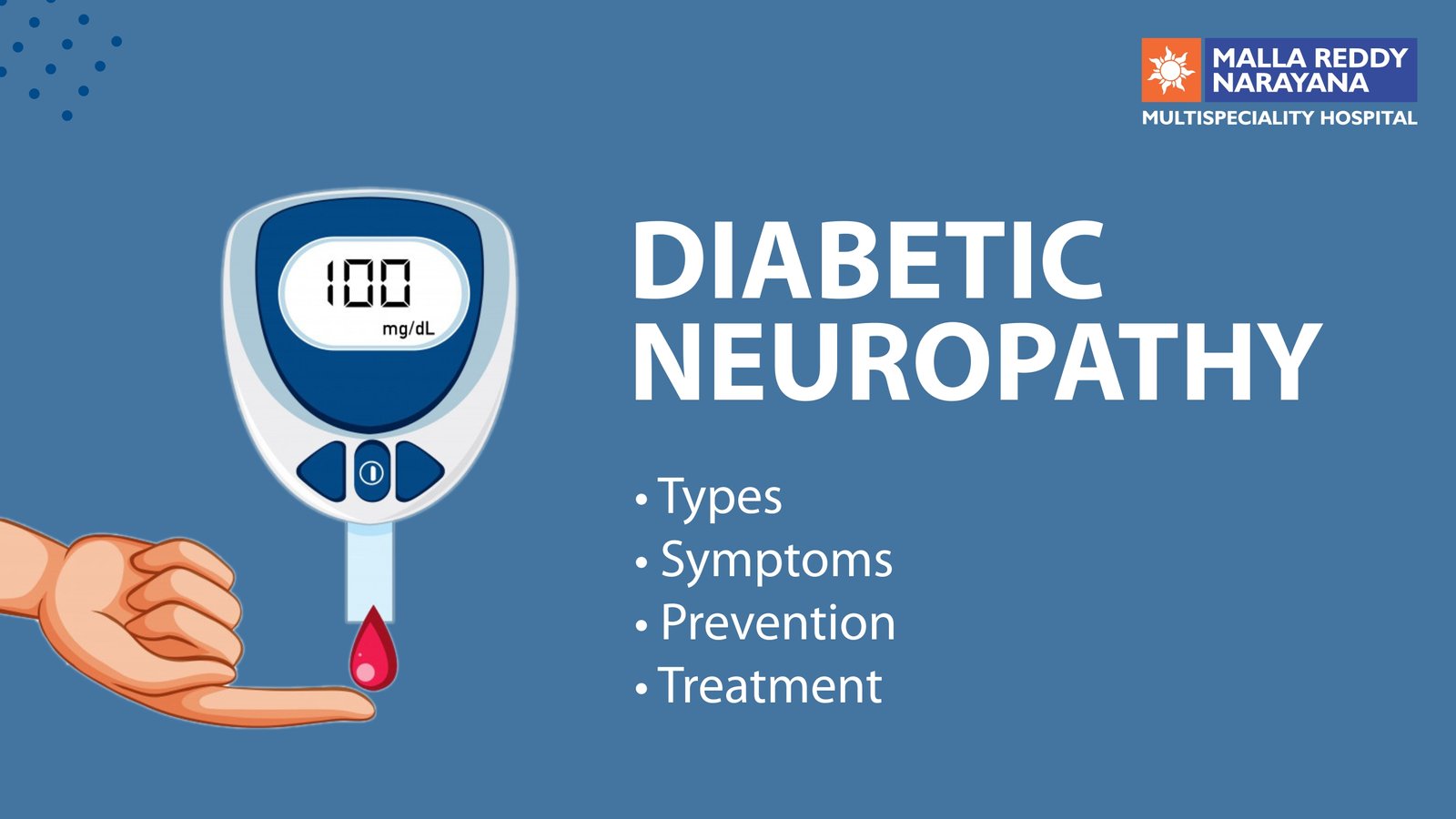Diabetic Neuropathy is nerve damage caused by diabetes. It is the most common diabetic complication affecting at least 50% of all patients. high blood sugar levels cause progressive injury to neurons out of which sensory neurons are usually the first to be affected. The most common areas affected are the legs and feet. The effect of diabetic neuropathy can go from simple numbness in the legs to damaging the neurons in the heart, digestive system, urinary tract, etc, Although it’s a very common yet serious disease, One can easily prevent and slow down the progression of this disease by sticking to a healthy lifestyle and maintaining the blood sugar levels in the healthy range.
What are the different types of Diabetic Neuropathy?
Diabetic Neuropathy is divided into 4 categories based on the areas it affects. One may have a single or multiple types of diabetic neuropathy and still be completely unaware, as the effects of the disease only surface when the conditions become severe. The 4 categories of diabetic neuropathy are as follows:-
(1.) Peripheral Neuropathy: Also known as Distal Symmetric Polyneuropathy, as it affects Multiple Nerves (Poly) on both sides of the body (Symmetrical) and affects the longest sensory axons that convey the sensation from the feet and hands (Distal). This is the most common form of diabetic neuropathy which affects the legs and feet, and in later stages also affects the hands and arms. The key symptoms constitute numbness, tingling, or burning sensation which becomes worse at night as the pain gets exaggerated. In this type of diabetic neuropathy, the sensitivity to pain either increases or is completely lost. The loss of sensation leads to an increased risk of painless injuries which often go unnoticed and therefore untreated, this together with slow healing caused by diabetes can turn minor cuts for clusters into serious infections.
(2.) Autonomic Neuropathy: Affects nerves that control the activities of internal organs like the heart, urinary bladder, intestines, etc.
- (a.) Cardiac Autonomic Neuropathy: In cardiac autonomic neuropathy, nerves that regulate heart rate and blood pressure are damaged, as a result, the body reacts slowly to changes in position, the patient can feel light-headedness, other symptoms include rapid heart rate and sudden changes in the heart rate.
- (b.) Digestive Autonomic Neuropathy: The nerve damage in the digestive caused by neuropathy can cause nausea, loss of appetite, difficulty in swallowing, bloating, and bowel problems.
- (c.) Urinary Autonomic Neuropathy: Damage in the nerves of the Urinary system can cause urinary retention, urinary hesitancy, urinary incontinence, and sexual dysfunctions.
Other major areas affected by autonomic neuropathy are the eyes when affected with diabetic neuropathy, which causes delayed adjustment time of pupil when exposed to dark and light, nerve damage in sweat glands can cause no sweat or a lot of sweat.
The most important effect of autonomic neuropathy is Hypoglycemia Unawareness that is the body is unable to feel the signals like hunger/ shaking/ dizziness, which are the key symptoms of low blood sugar levels and hence the patients pass out before they can even take any measures.
(3.) Mononeuropathy: Also known as focal neuropathy, is the dysfunction of a single nerve due to entrapment, a common example is carpal tunnel syndrome in which the median nerve is compressed while passing through the narrow tunnel in the wrist causing pain, numbness and tingling in the hand. Damage to the cranial nerve leads to loss of vision and control of facial muscles.
(4.) Proximal Neuropathy: Also known as diabetic amyotrophy, is a rare but severe form of diabetic neuropathy which affects the areas of the buttocks, abdomen, chest – typically on one side of the body. Symptoms include severe pain in the affected area. Weakness and shrinking of the muscles around the thigh area is the key symptom of this type of neuropathy.
What Causes Diabetic Neuropathy?
With the current level of medical advancement, the exact cause of diabetic neuropathy is unknown, further researches are being done to pinpoint the exact trigger for diabetic neuropathy. The current theory that the researchers believe is that uncontrolled blood sugar levels, over a long time damages the nerves and interfere with the ability of neurons to send and receive signals.
What are the Risk Factors?
A person with diabetes can develop diabetic neuropathy at any point of time in their life, but the following factors put one at an even greater risk
- Family History Of Diabetes: The chances of getting diabetic neuropathy increase significantly for someone whose past generations have a history of diabetes.
- Obesity: Being overweight in itself is an open invitation to a majority of the most critical diseases. Hence is the case with neuropathy, a person having a Body Mass Index of 25 or more has an increased risk for getting this disease.
- Smoking: Smoking decreases the blood flow to the legs and feet by narrowing the artery, which makes healing difficult, which is already slowed down in a person with diabetes, and smoking also damages the peripheral nerves.
How To Prevent Diabetic Neuropathy?
As you are now aware of the fact that the nucleus of this disease is uncontrolled diabetes. Hence you can prevent and slow down the progression of this disease by the following steps;
(1.) Managing Blood Sugar: This is the Most Important point one needs to follow to keep diabetes neuropathy at bay.
(2.) Taking Good Care Of Feet: Feet are the most common area which is affected by diabetic neuropathy. Hence they need proper attention. Problems like sores, ulcers, and cuts which are common in diabetic neuropathy can be prevented by regular self-examination of the feet. Keeping a watchful eye for cuts, bruises, and cracked skin that is not healing. Wash your feet with lukewarm water and soap daily and keep them moisturized and wear well-cushioned shoes.
The above steps can help minimize the risks of getting diabetic neuropathy and if someone is already suffering from the complications, taking the preventive measures can help slow down the rate of progression of the disease.











